We spent most of the day in the Fes Medina, the oldest part of the city. Nine thousand narrow streets ramble through this colorful, stimulating area. Founded in the 9th century, Fes Medina is often considered the world’s most well-preserved medieval city.
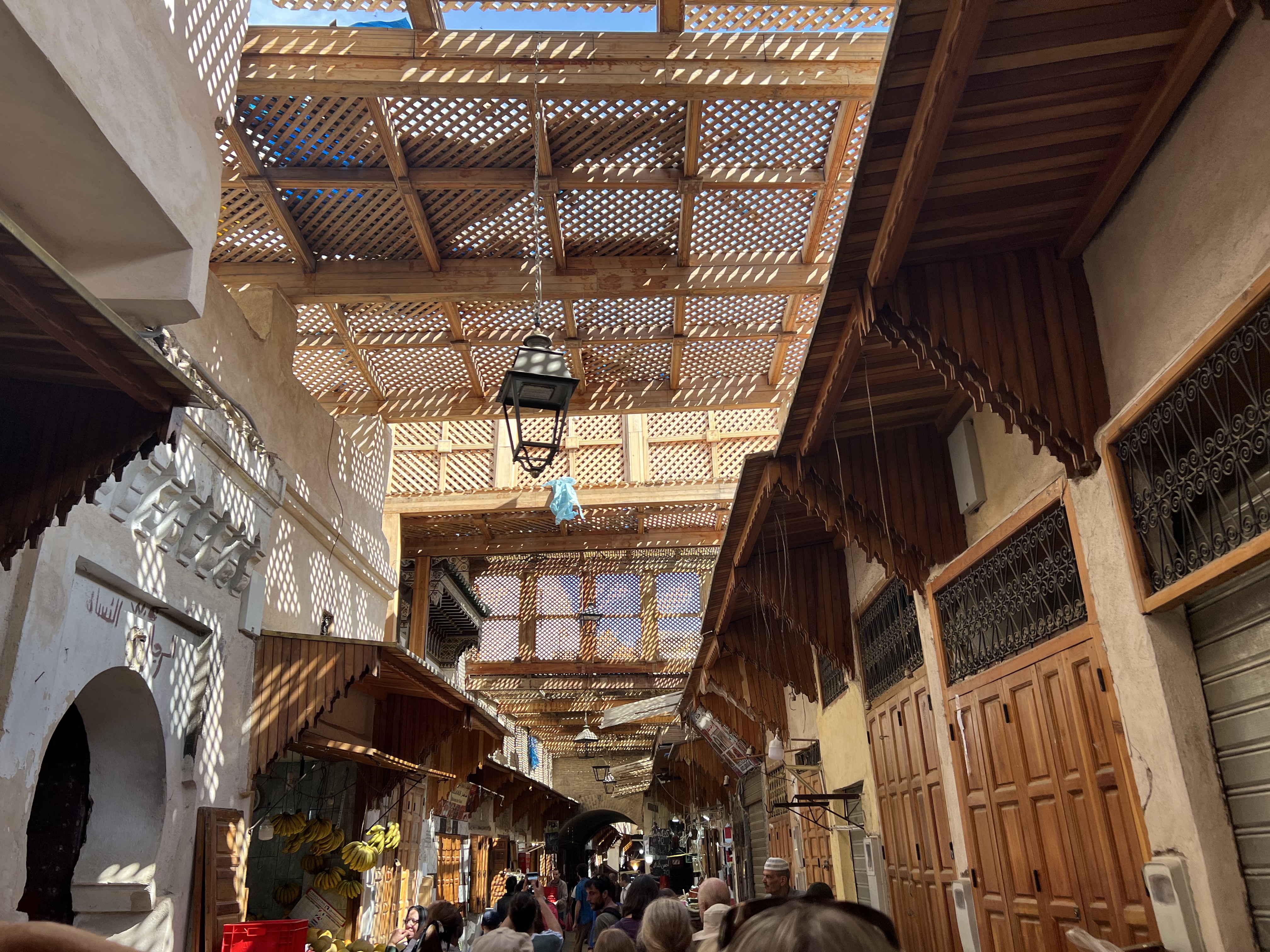
Jewish Quarter
In 1492 (the same year Columbus sailed to America) Spain expelled all Jews who would not renounce their faith. Many of them chose to go to Morocco. They established a Jewish Quarter, called the mellah, in Fes.
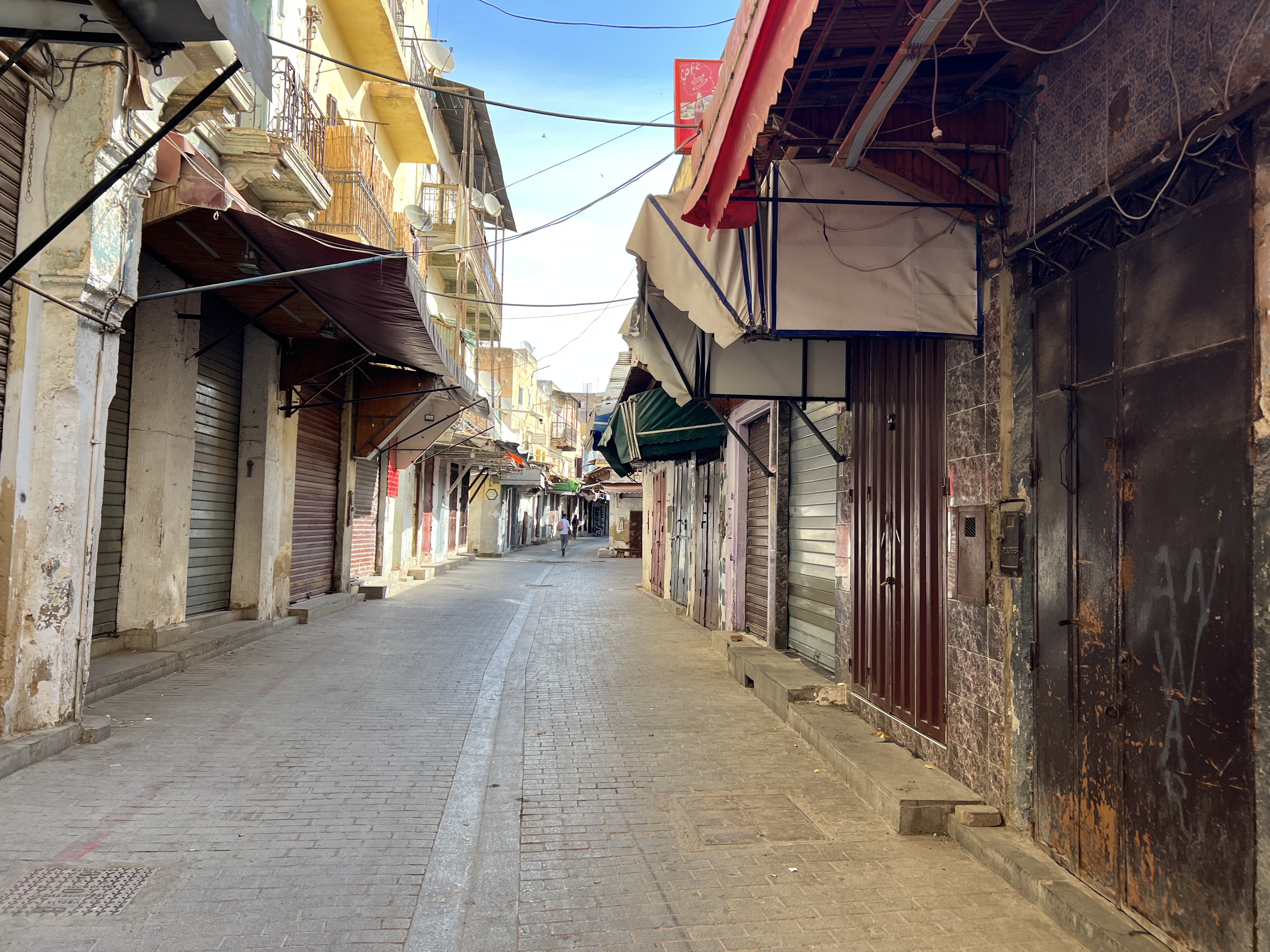
In the 17th century, they constructed a synagogue. Now the synagogue is a museum.
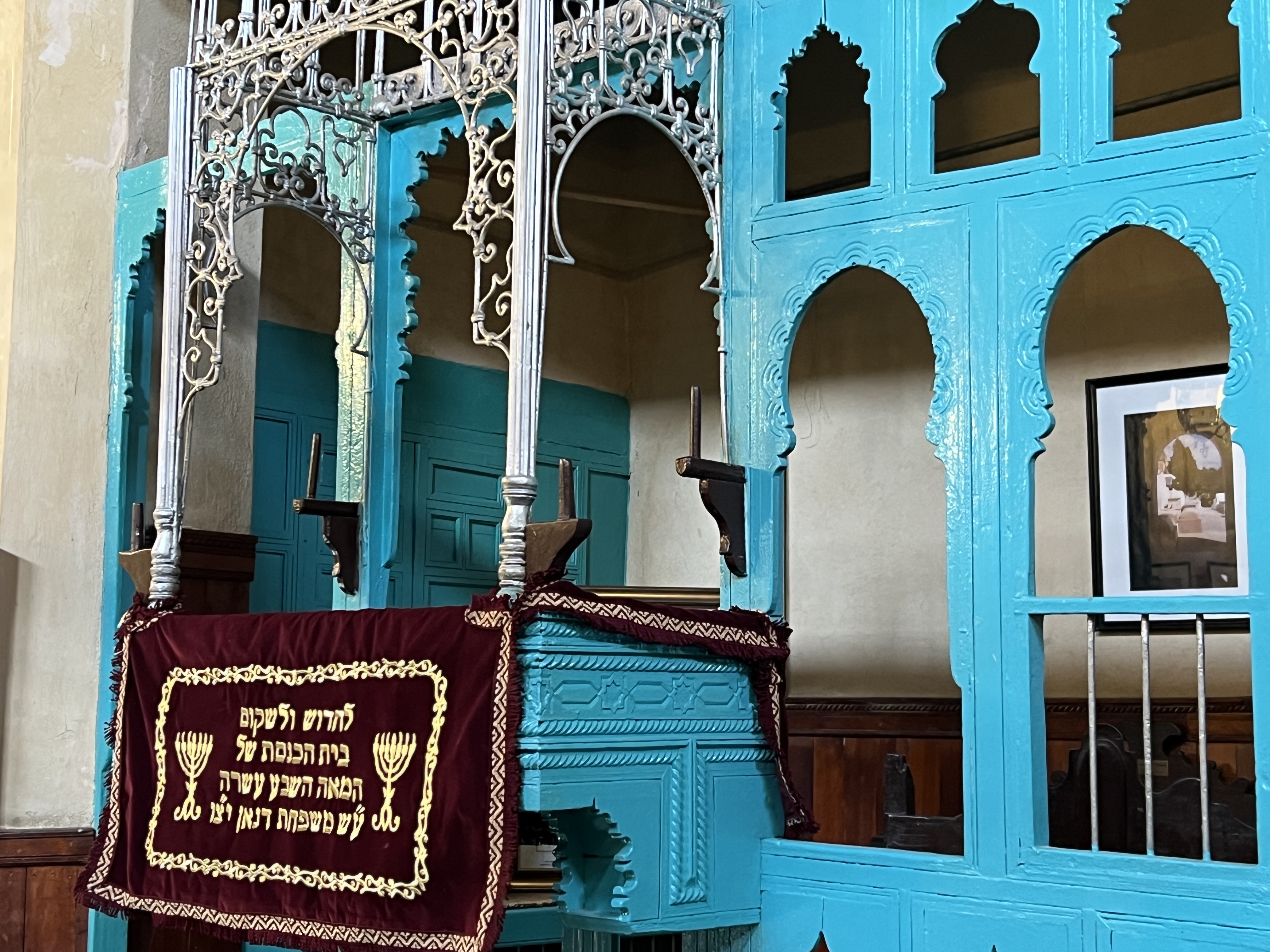
Royal Palace of Fes
Leaving the Jewish Quarter, we walked around the corner and stopped in front of the Royal Palace of Fes. Built in the 14th century and renovated in 1968, it is the largest and oldest royal residence in Morocco.
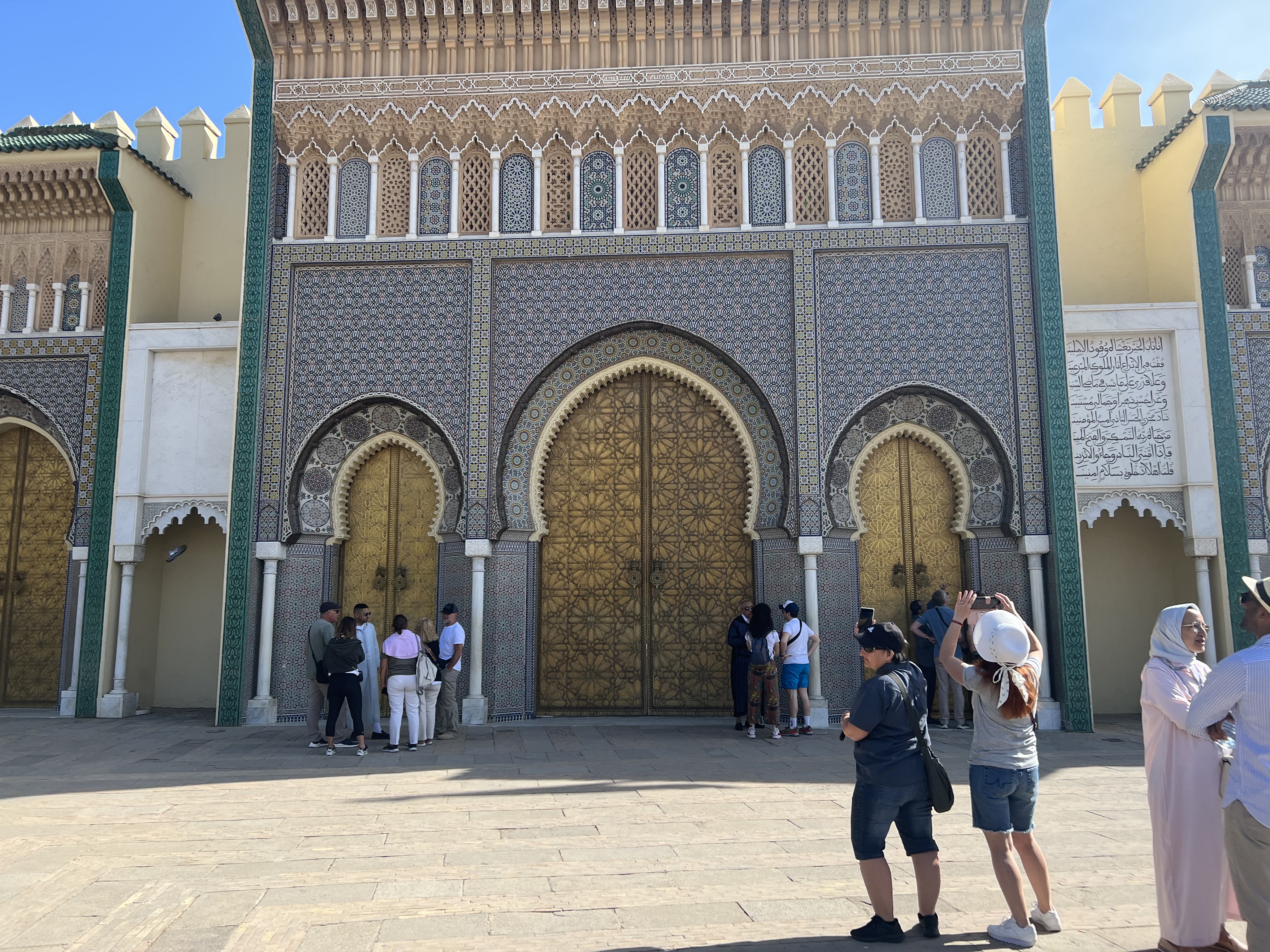
Medina
After the relative calm of the Royal Palace, we entered the busy medina.The sights, sounds and scents were intense. I loved the beautiful displays of spices and dried fruits.
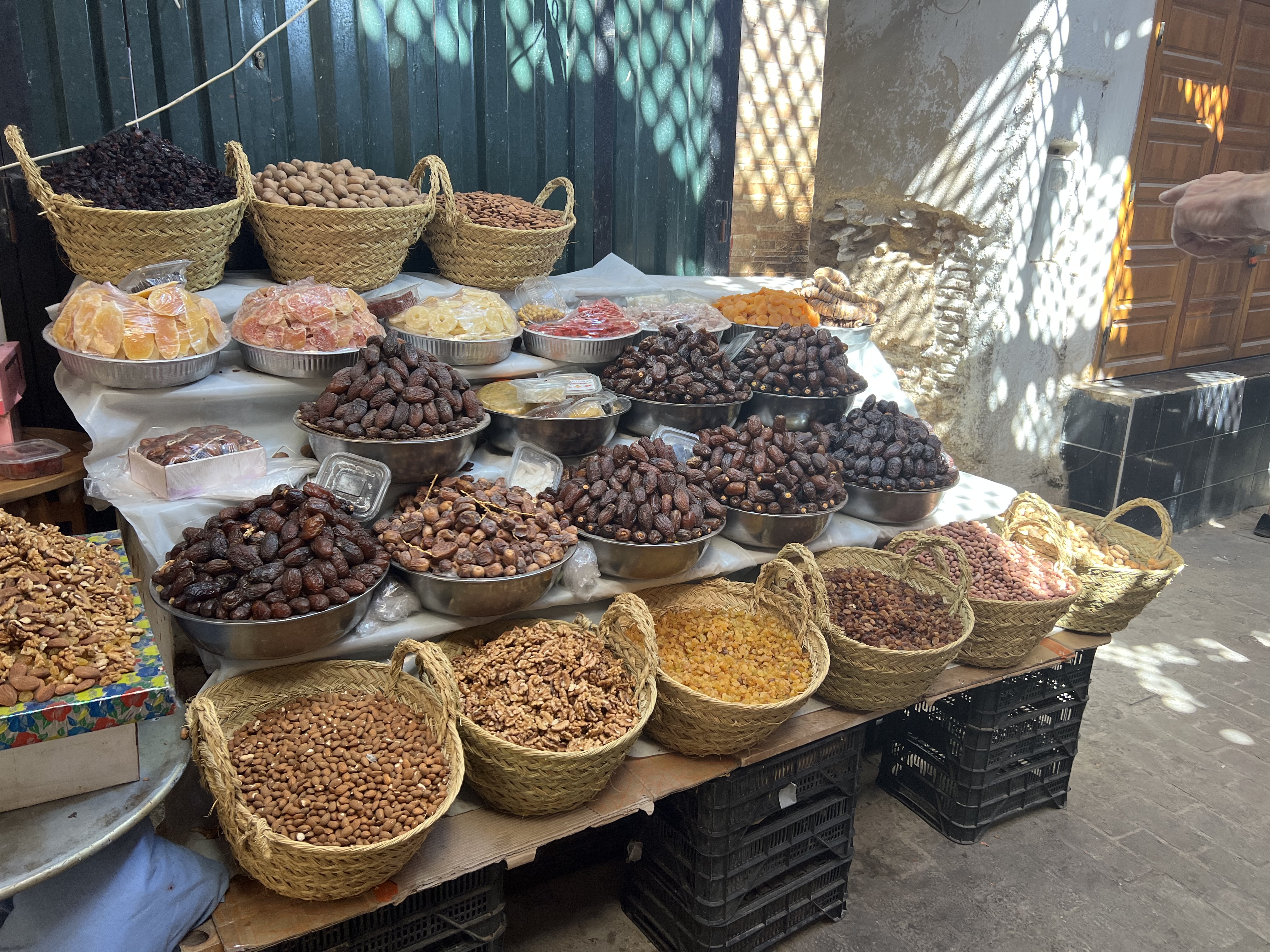
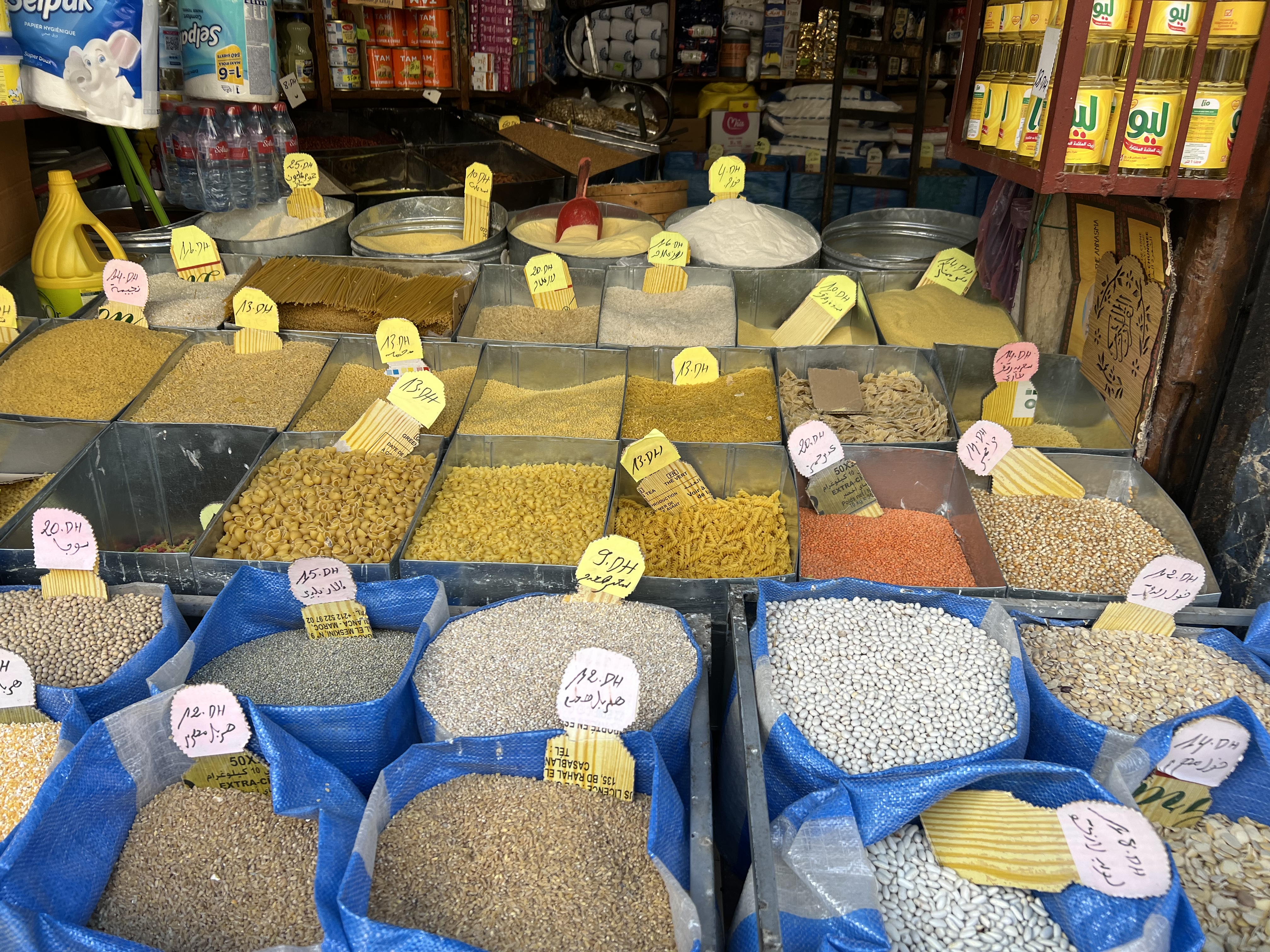
Our guide pointed out different sections of the medina. The fiber and metals section were two of the most colorful.
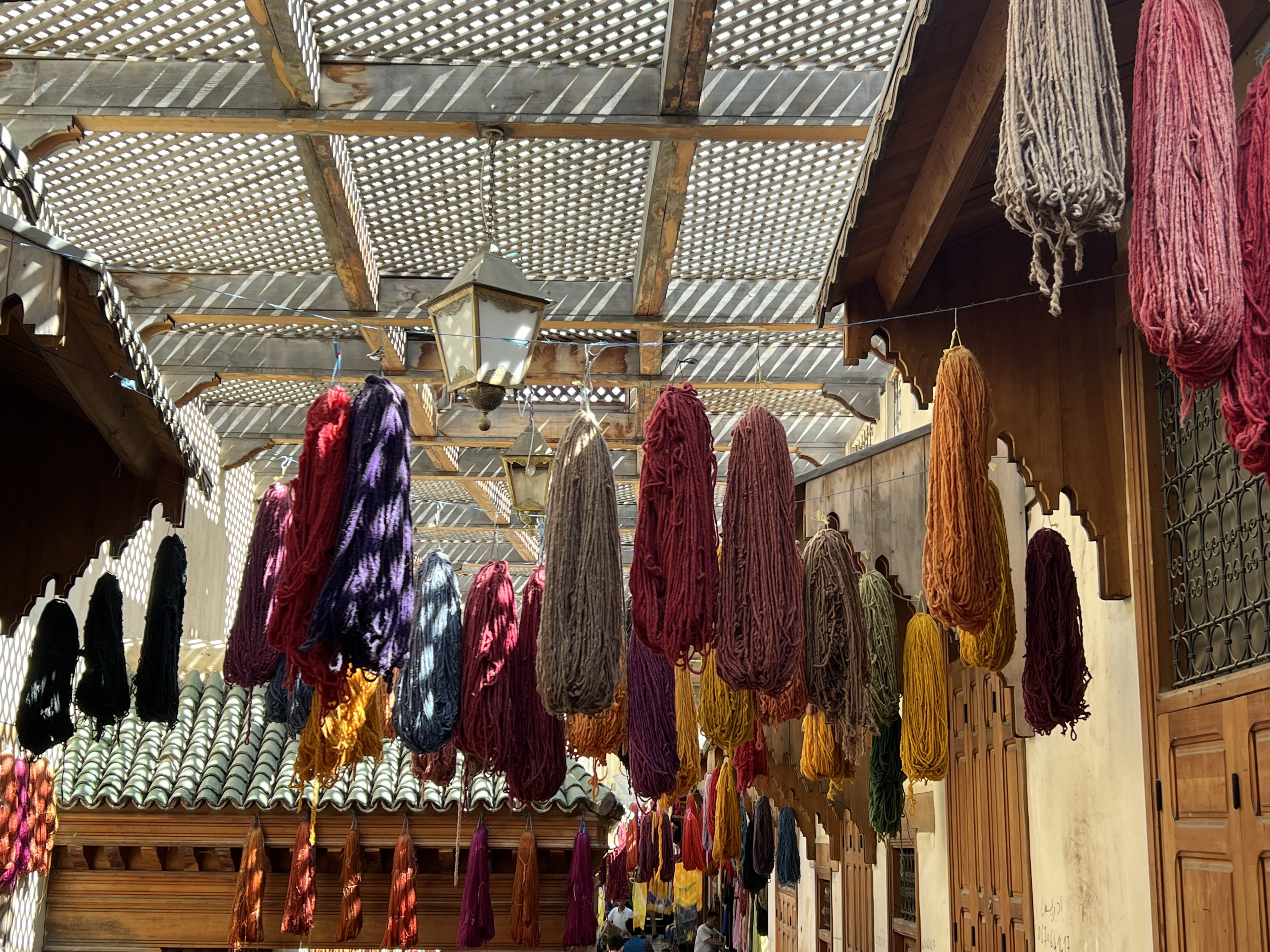
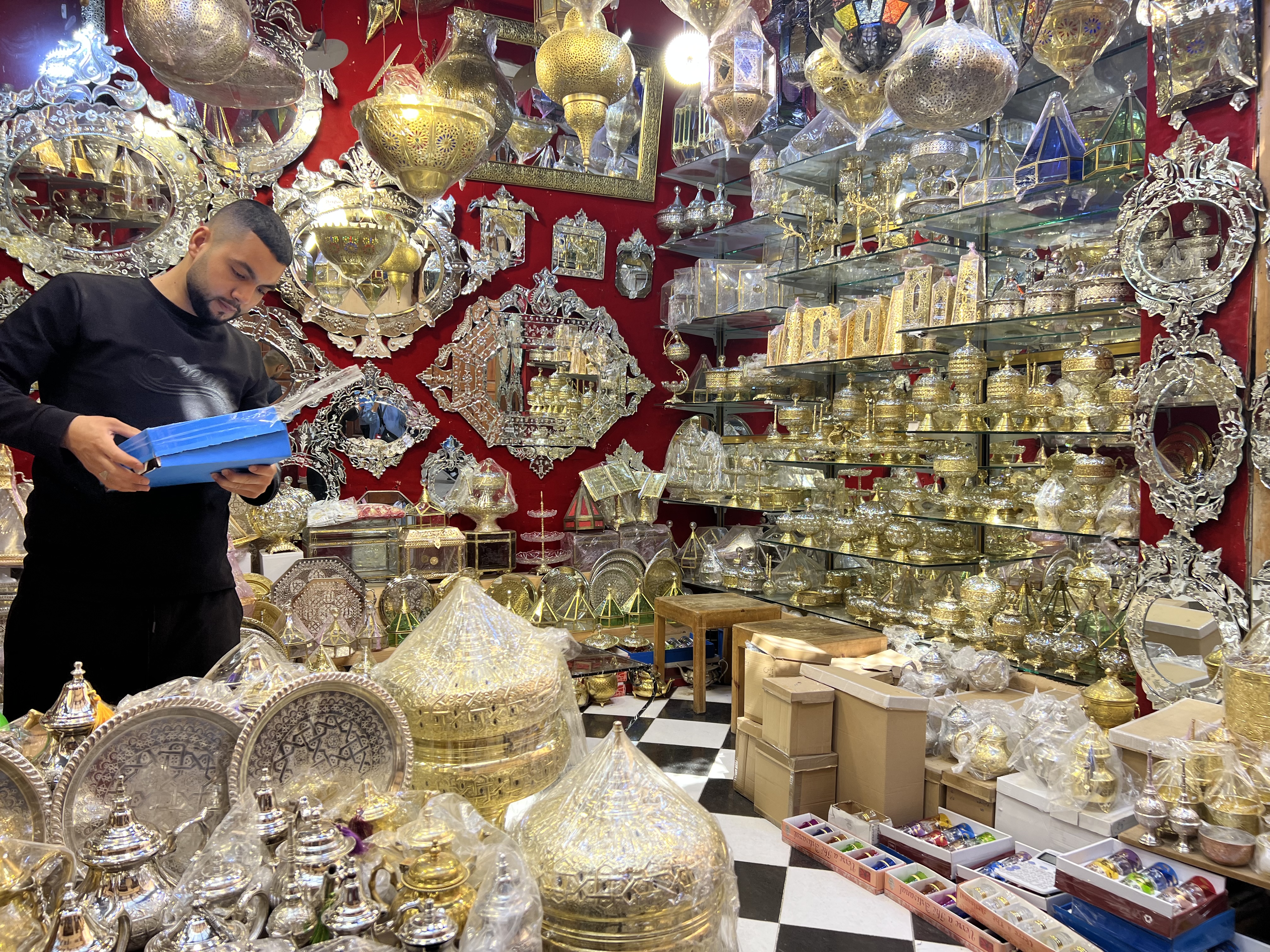
One booth sold baskets of rose petals. Moroccan women use the petals to make rose water that is used in food, medicine and perfume.
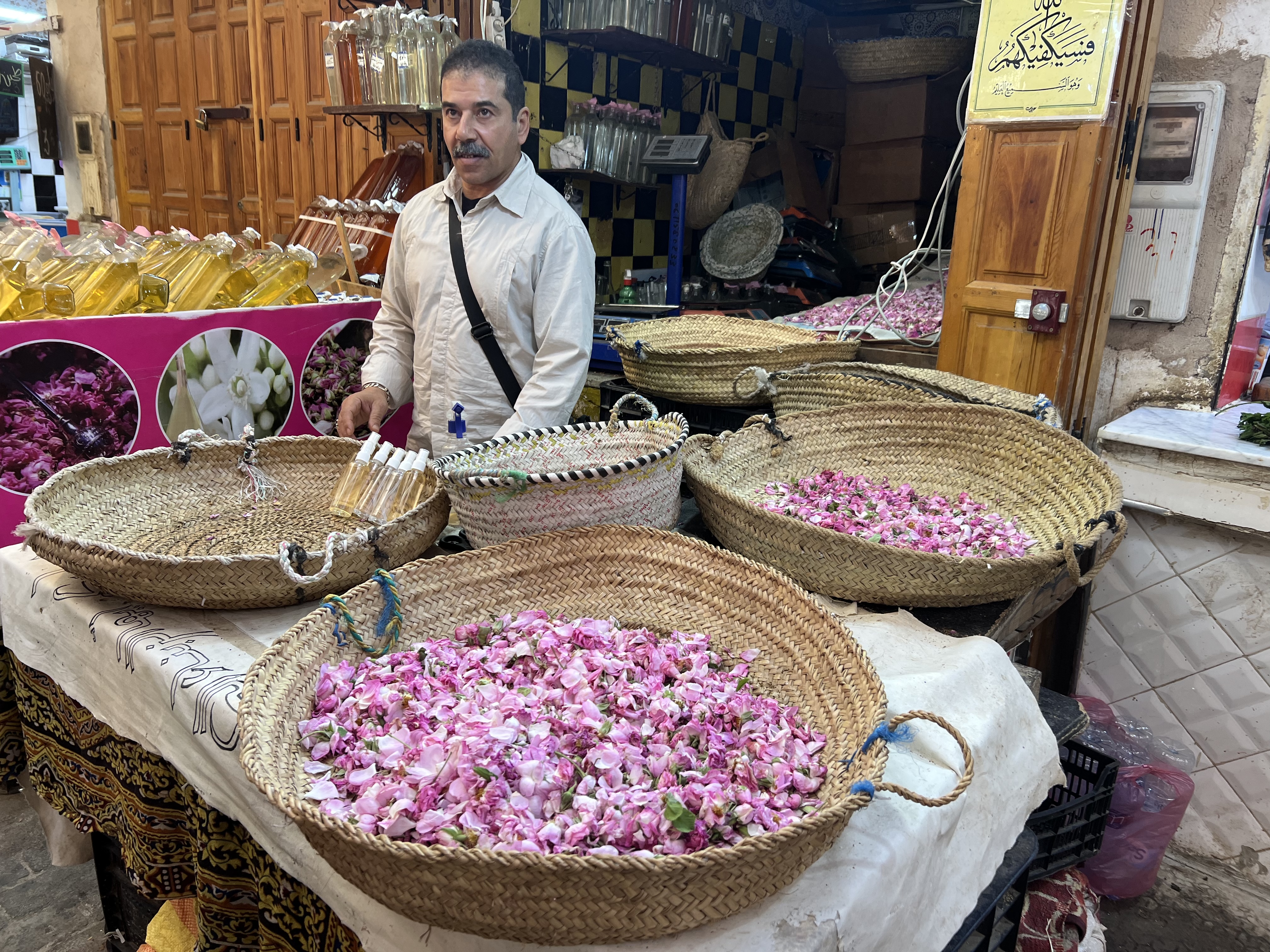
We stood on top of the bridge over the Fes River which divides the two parts of the medina.
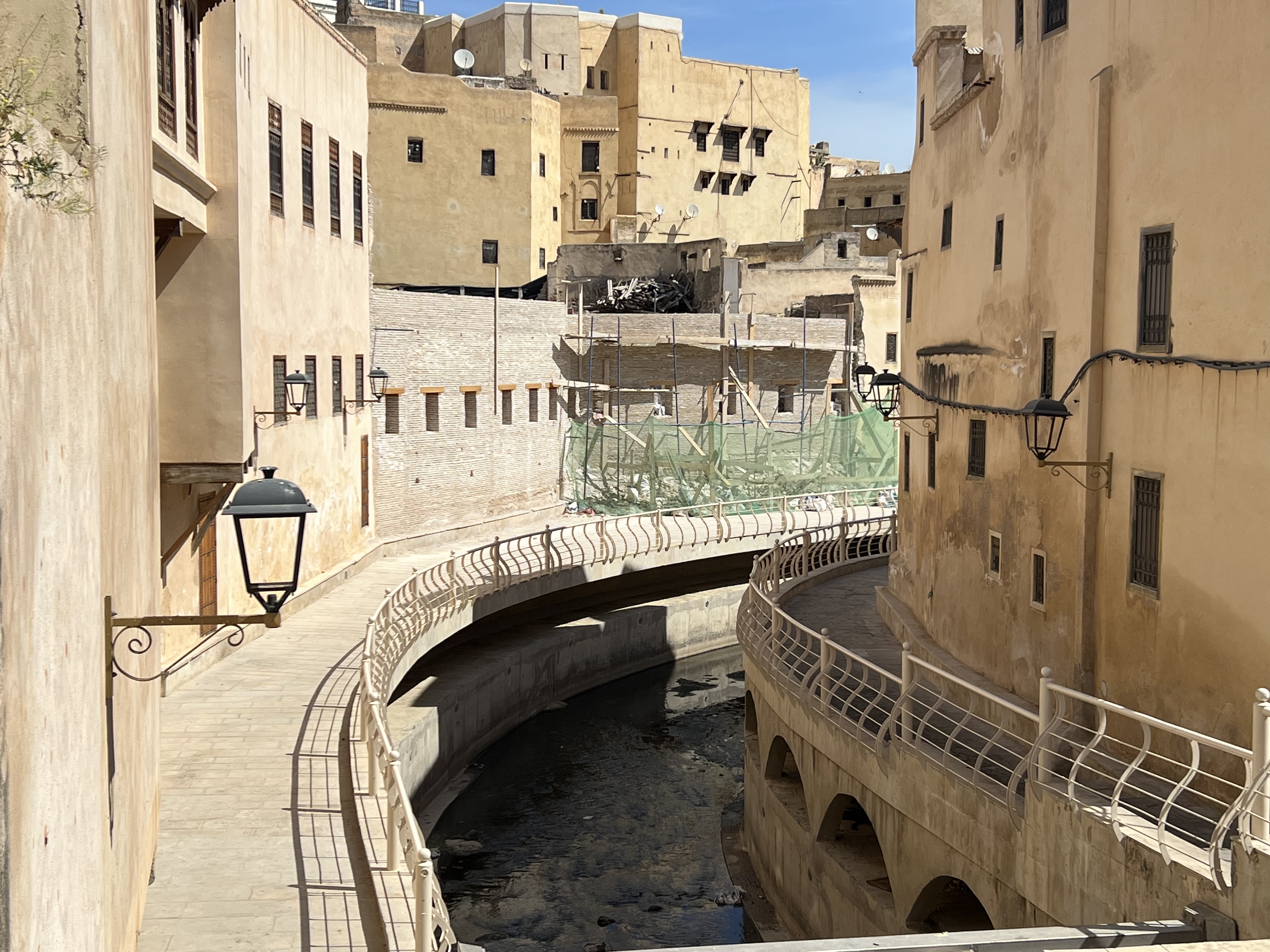
The oldest university in the world is in Fes. Founded in the 9th century, Qaraouiyine is a mosque and a university. The plaque outside the entrance states, “Considered to be the first multidisciplinary university in the world, it remains until now a center of Islamic spirituality.”
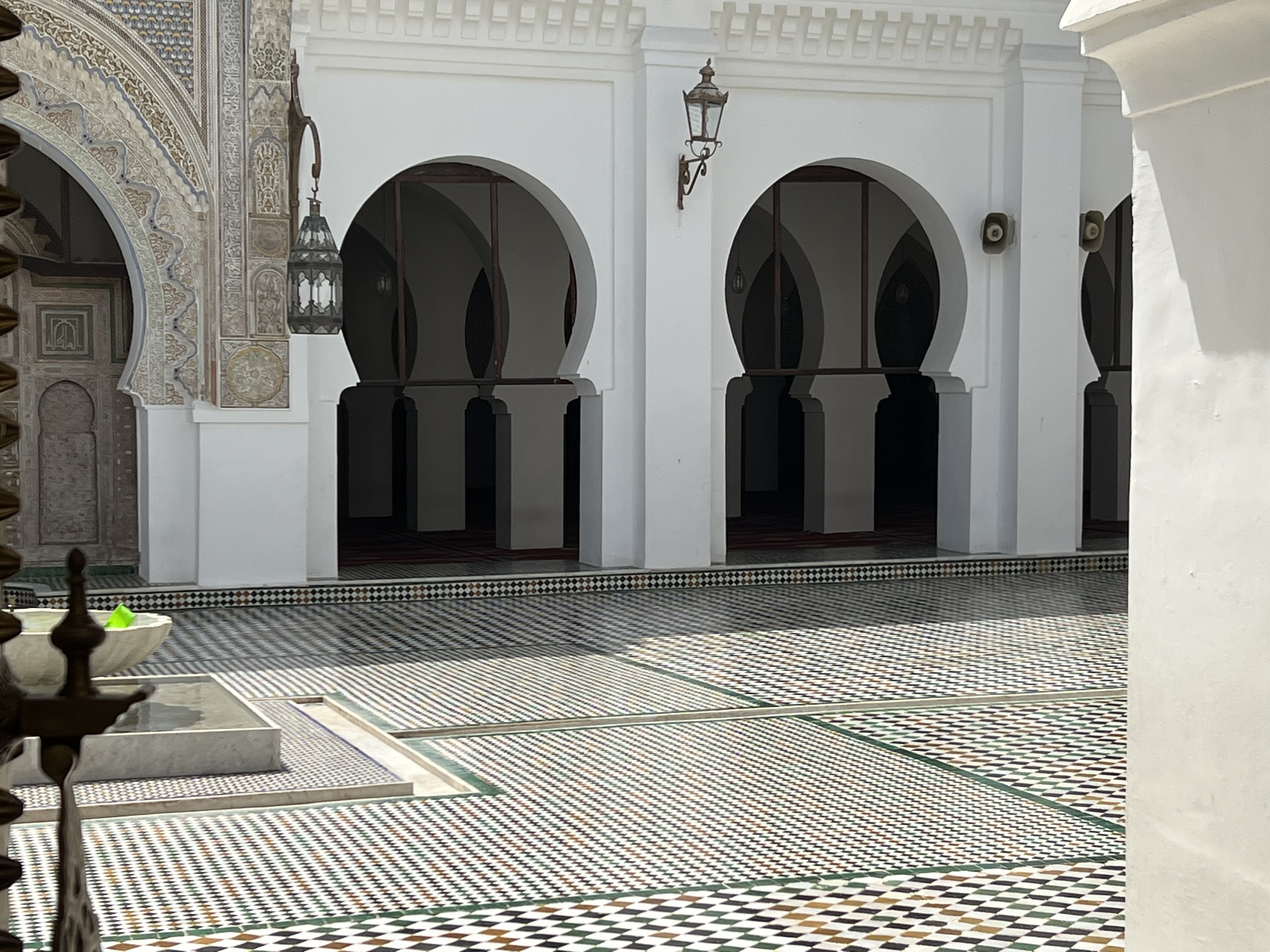
The shrine to Idris I, the founder of Fes is in the medina. Only Muslims are allowed to enter, but we were able to look in the front entrance.
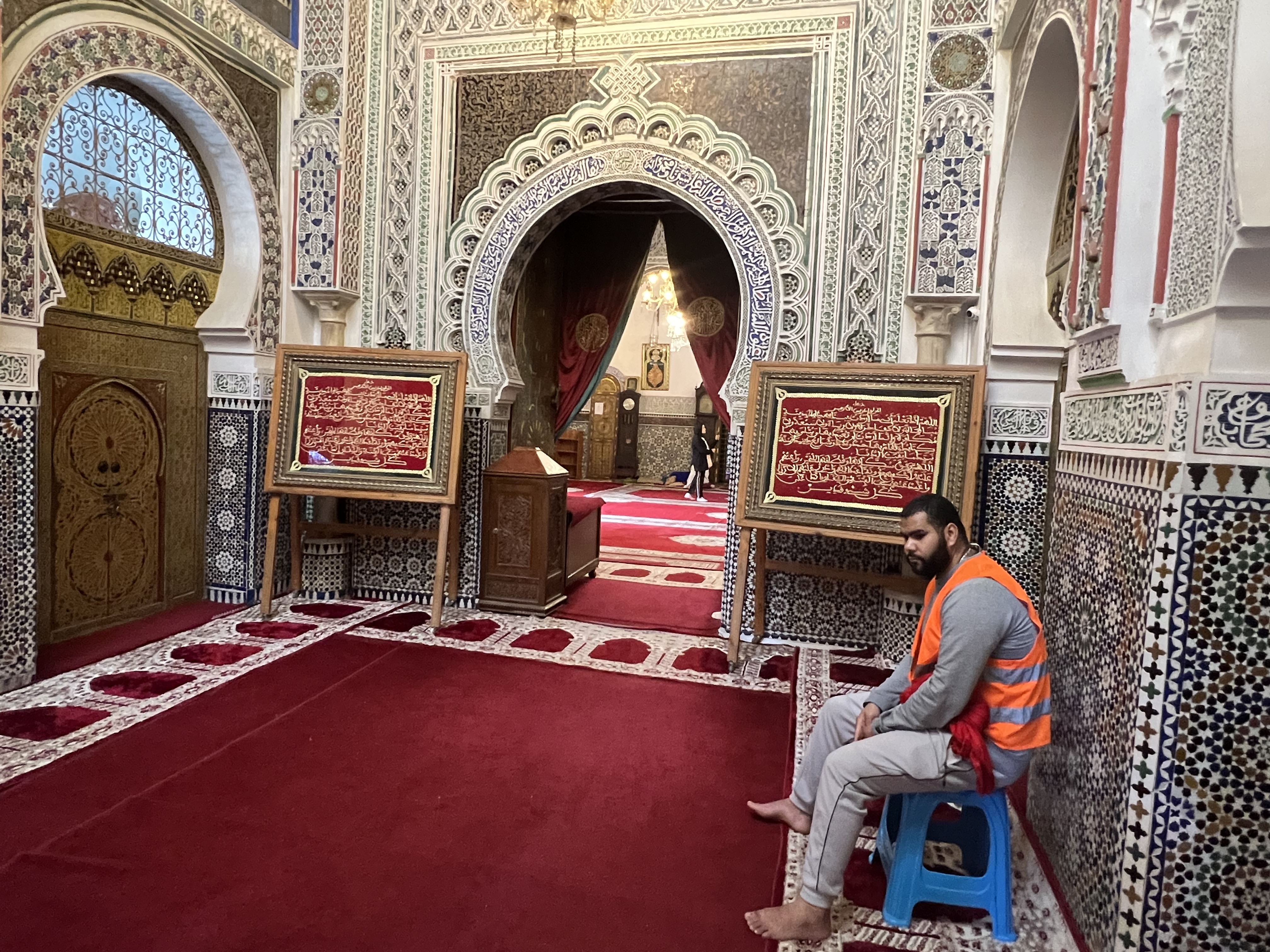
People buy ornate candles from stalls around the shrine to burn and ask for a blessing.
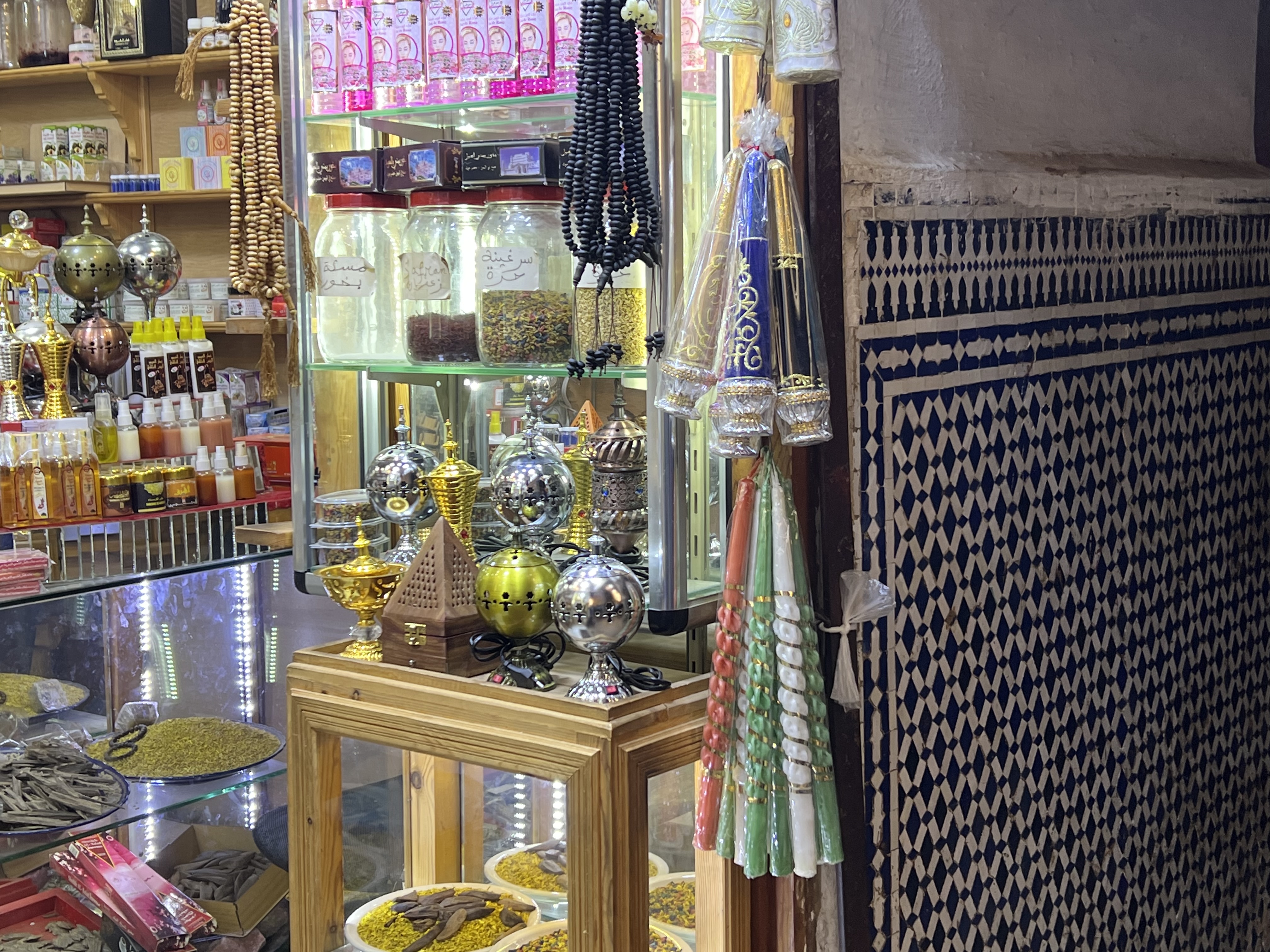
Tannery
The oldest tannery in Morocco is located in the medina. Hussain, the manager and designer, gave us a tour and explained the process.
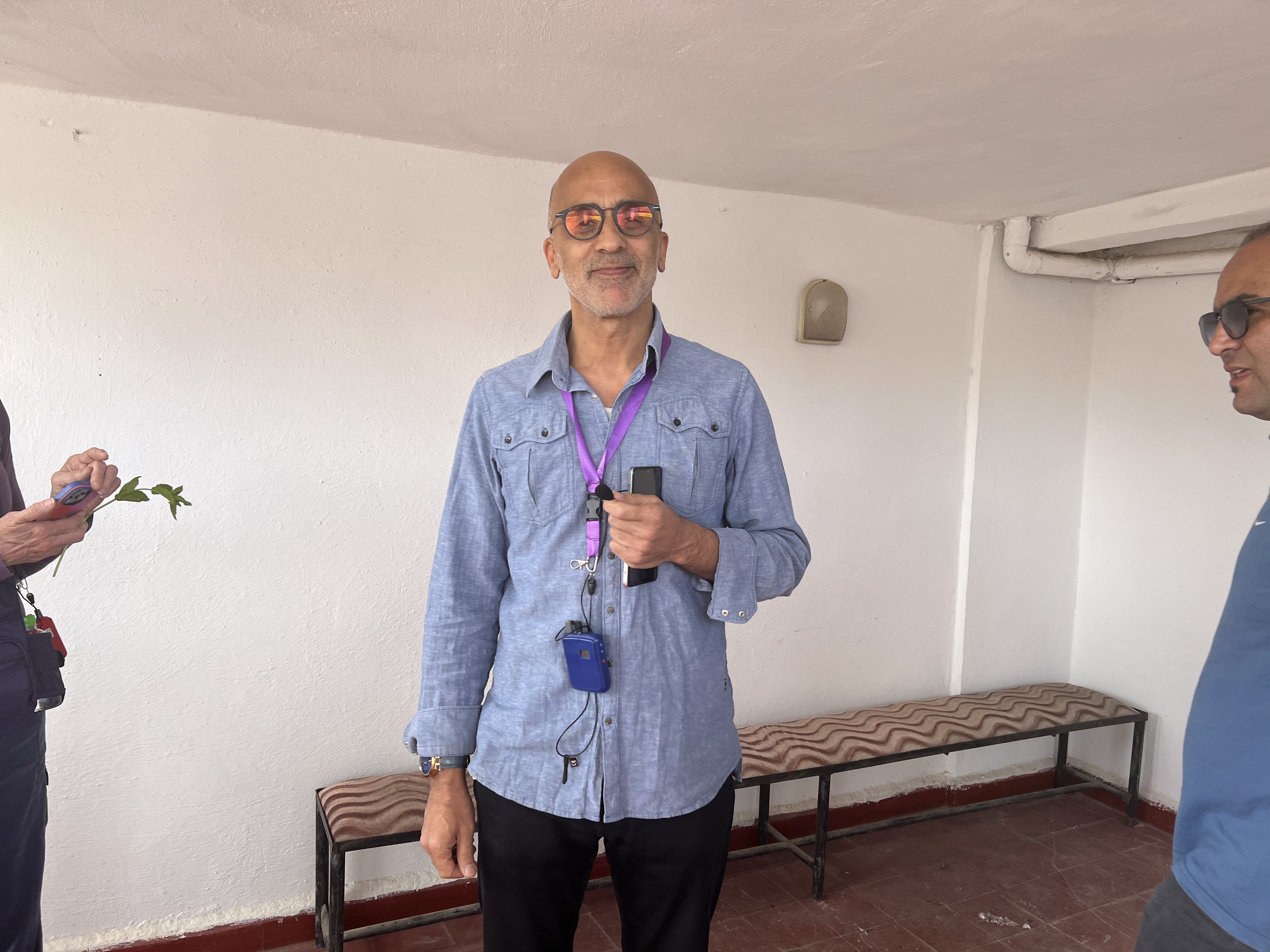
Before we climbed to the top of the tannery to observe the tanning vats, Hussain distributed mint sprigs to hold under our noses in case the smells were too strong. They were strong but tolerable. The hides are soaked in water, pigeon poop, and one more secret ingredient only the tanners know. Pigeon poop is big business in the medina. 80% of people in the old city collect and sell it to the tannery.
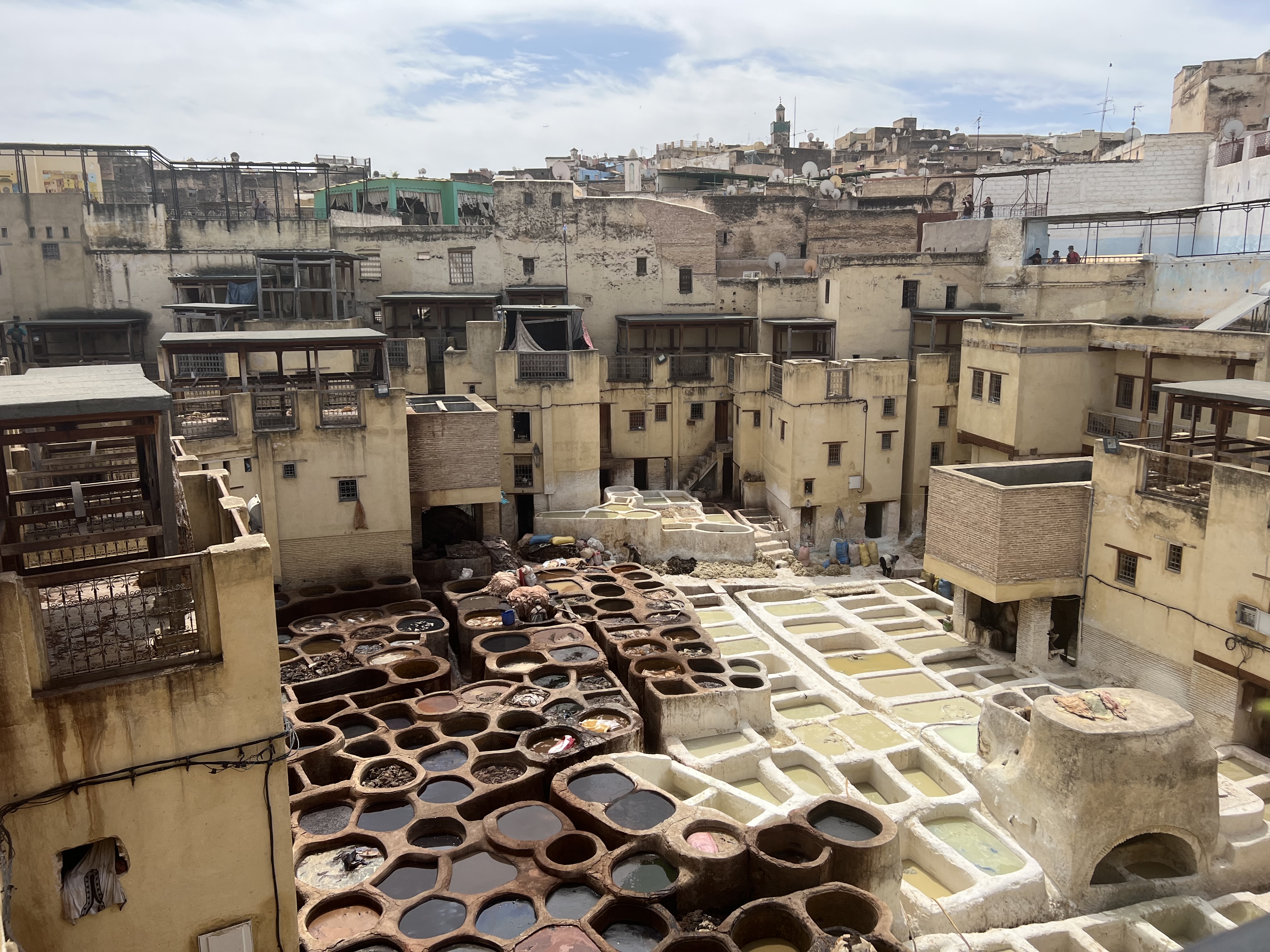
Before leaving the tannery, we visited their shop and admired the beautiful products.
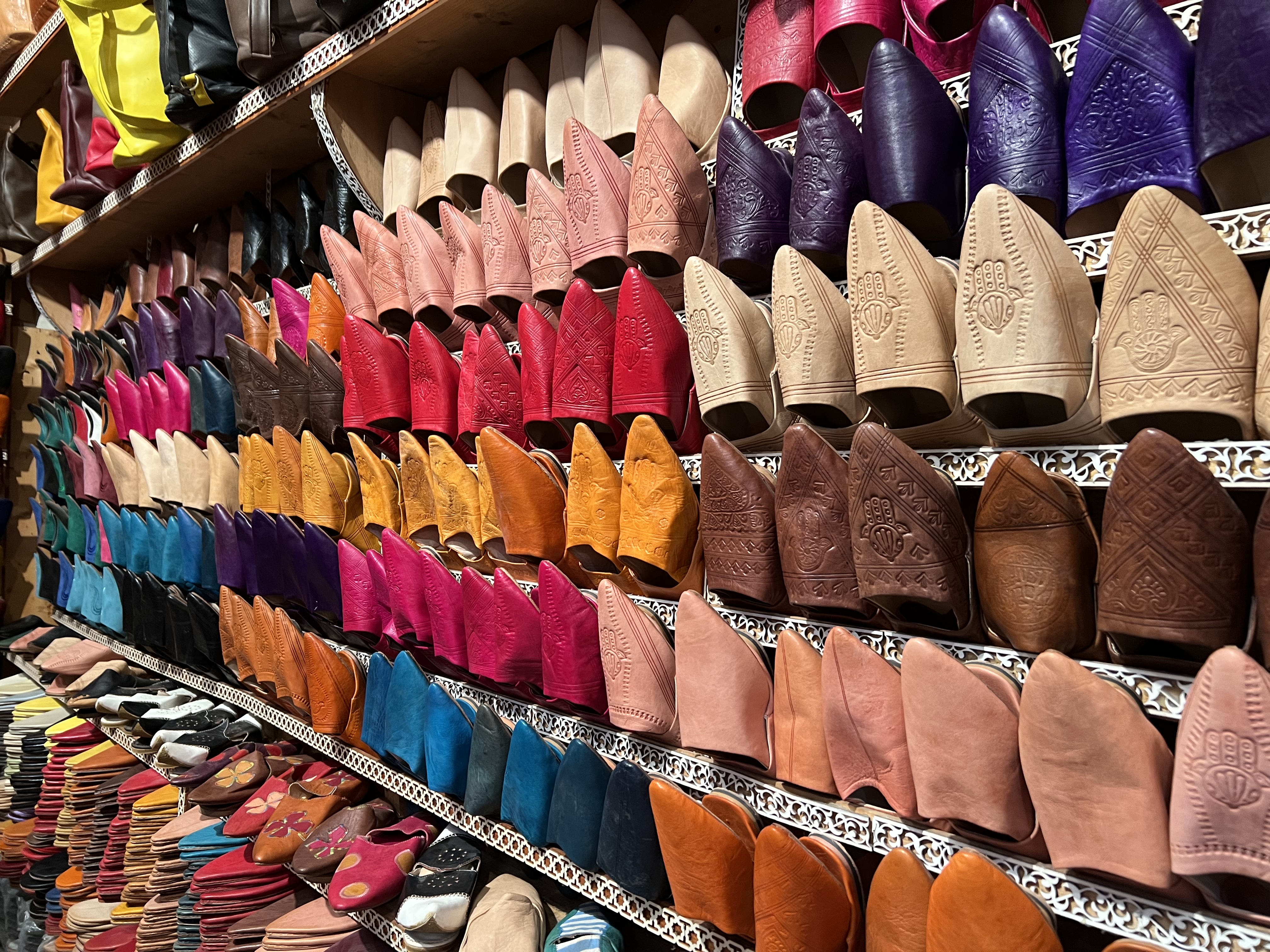
We saw a lot before lunch. After lunch we visited a beautiful,14th century madrassa, an Arabic word for school. Unlike madrassas in other countries which focus only on religious education, Moroccan madrassas prepare students in both secular and religious subjects.
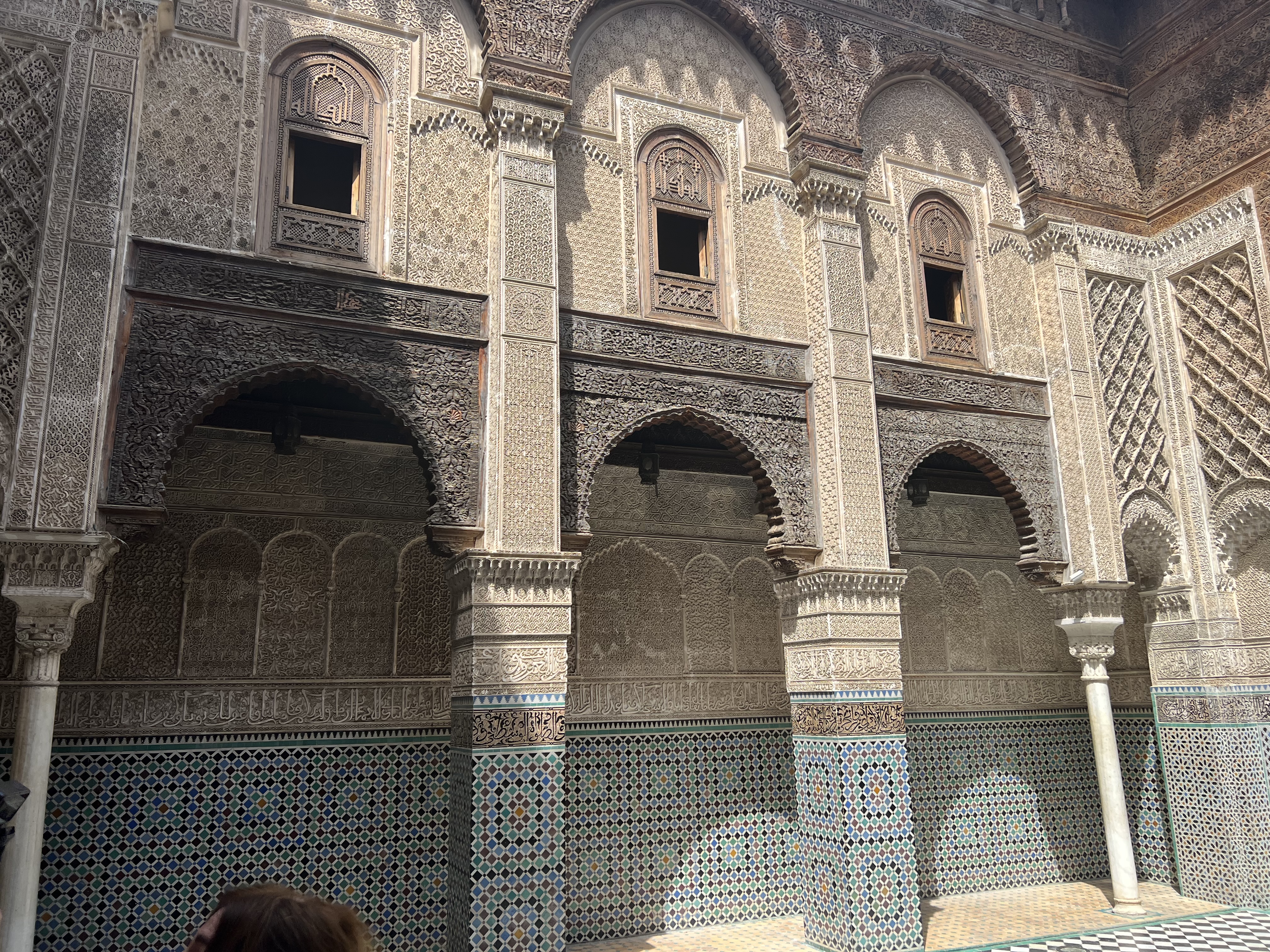
LIke all madrassas in Morocco this one has a central courtyard and fountain for ablutions before praying.
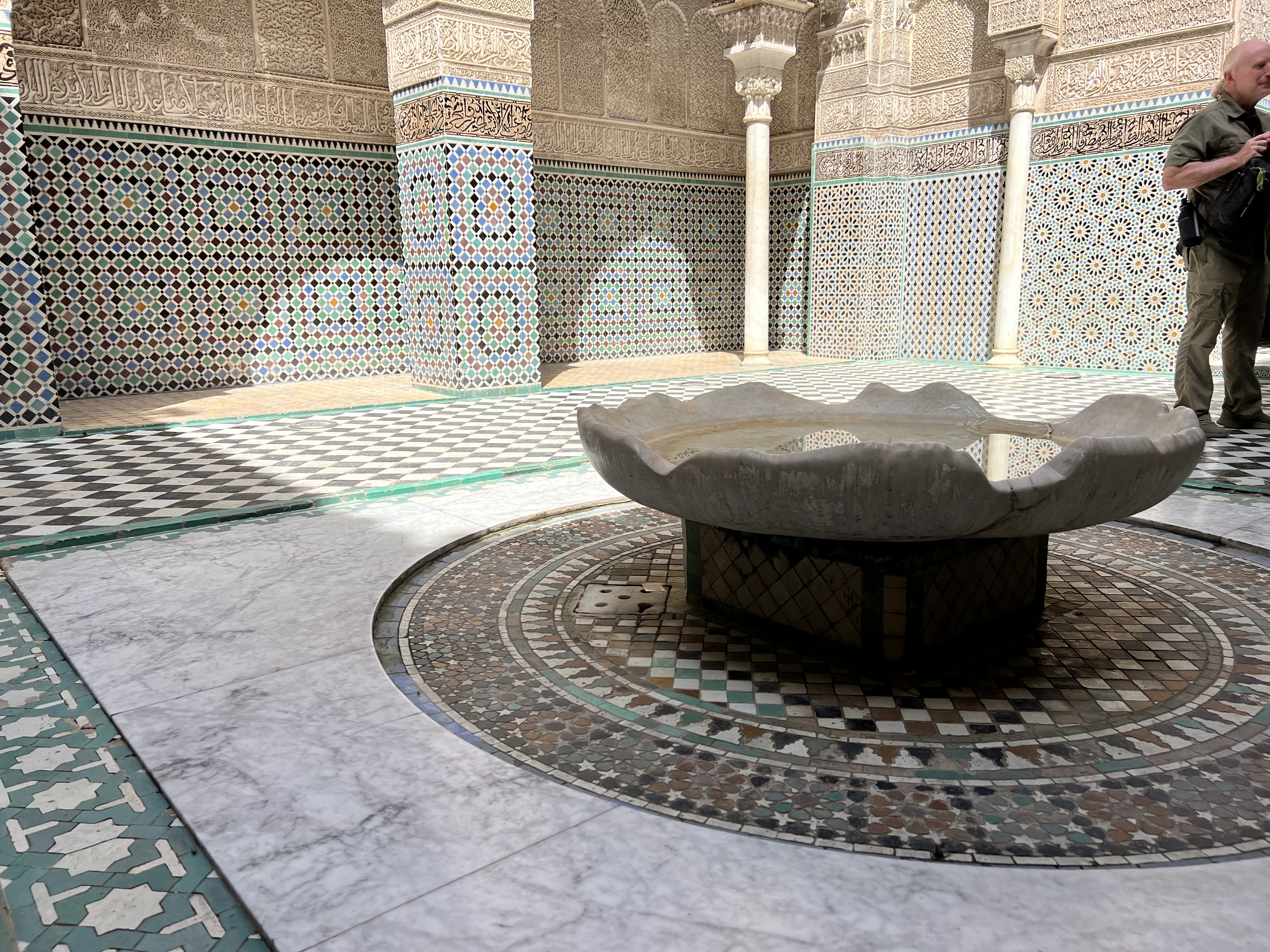
Home-Hosted Dinner
My favorite part of traveling is meeting people and learning more about their lives and culture, so I was really excited about the home-hosted dinner. Our evening of dining with a local family was one of my best travel experiences, ever!
Six of us went to the home of a young Moroccan family for dinner. Mehdi, Rania and their young son Moustafa met us at our riad and escorted us to their home. On the way they showed us their restaurant.
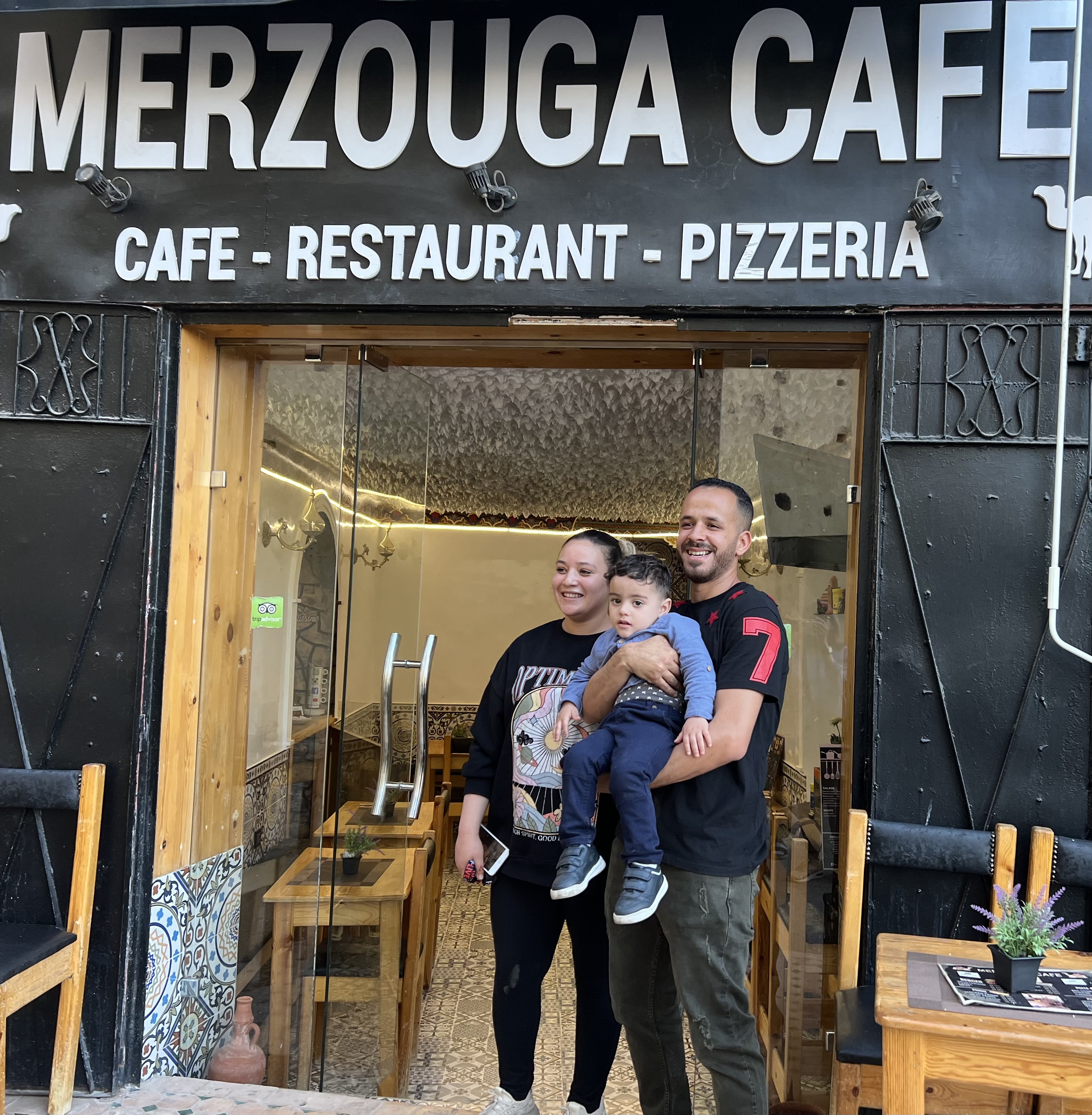
Throughout the night we chatted and learned so much about how they live. They were so welcoming, relaxed and honest that it soon felt like an evening with friends. Before dinner Mehdi served mint tea in the entertaining Moroccan style and Rania served Moroccan cookies.
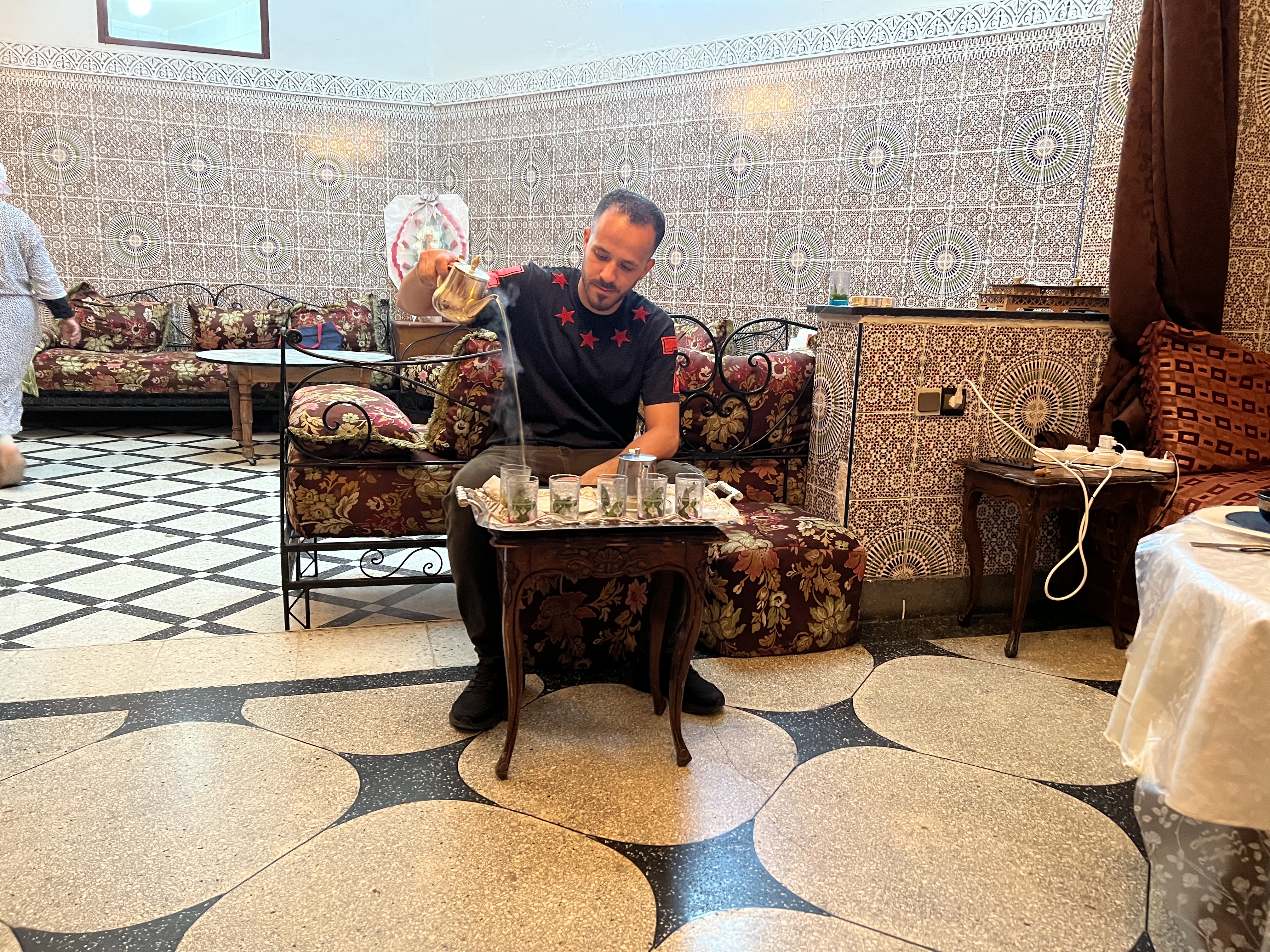
This busy young couple made time to host an incredible evening for us. Rania teaches Arabic and English and Mehdi owns a cafe and B&B. Recently he has started acting in a few films. He and his mother were extras in the new Indiana Jones movie filmed in Fes.
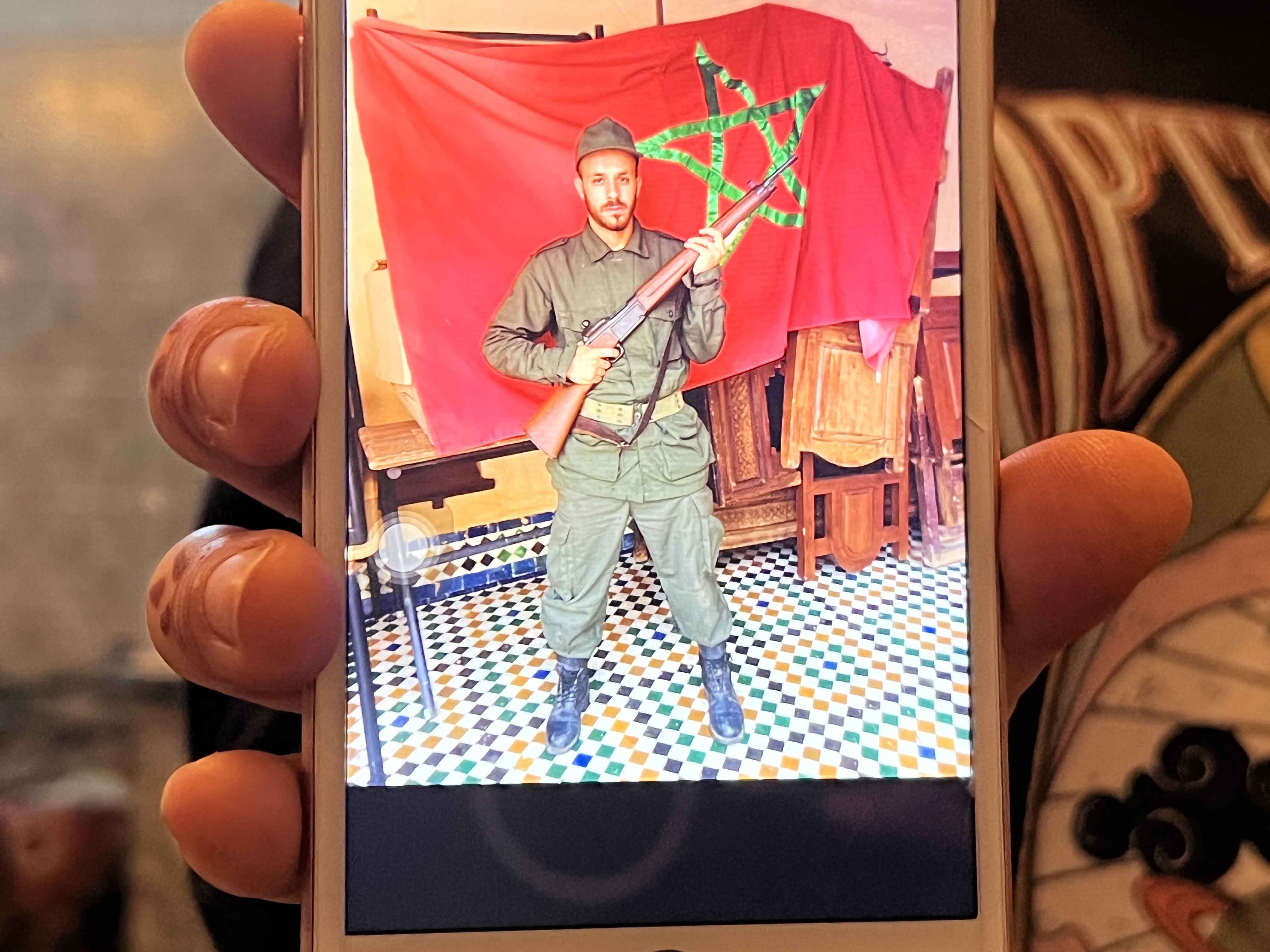
During the filming, they both met Harrison Ford.
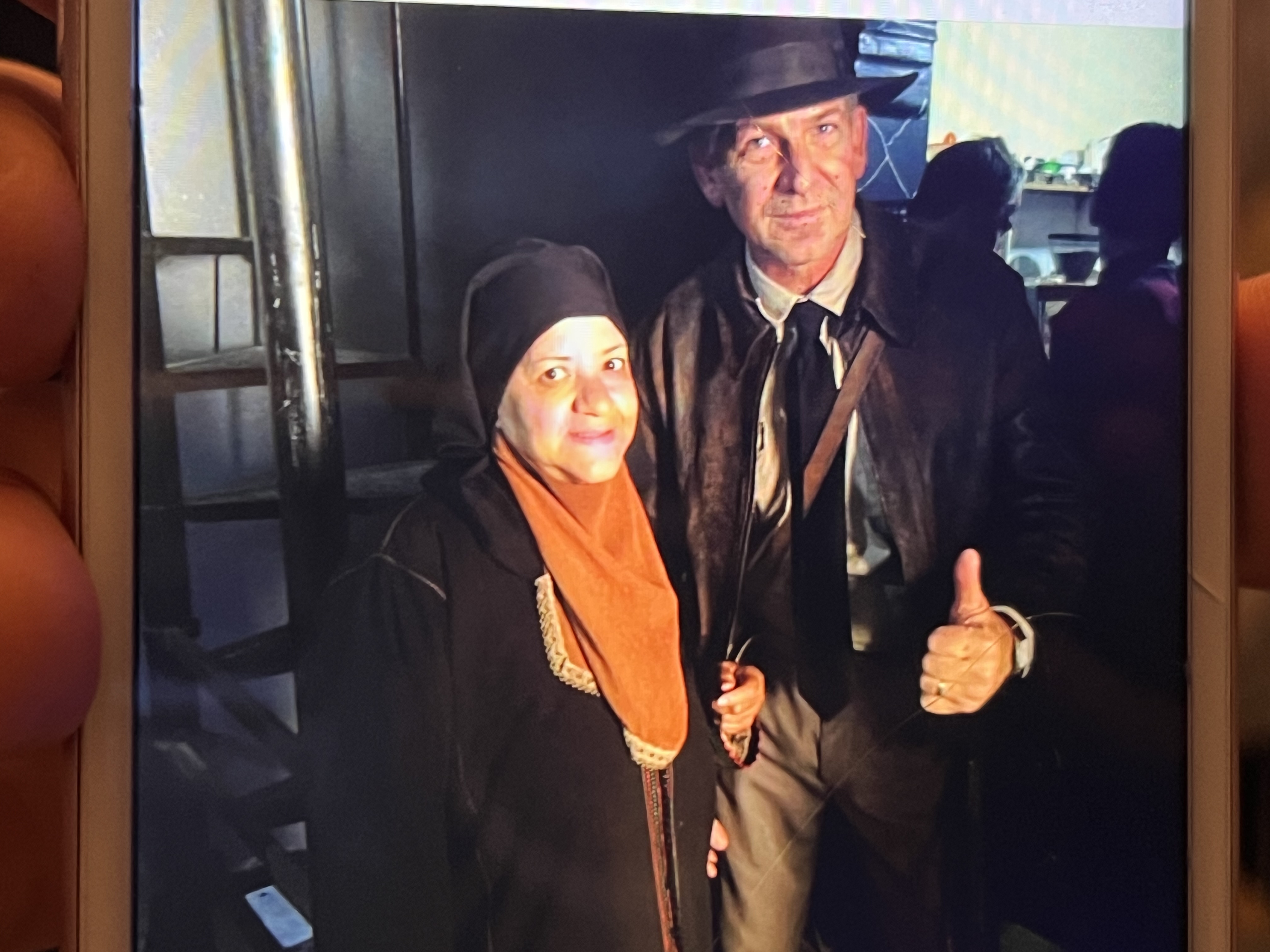
We had so many questions, and they openly answered every one. We talked about education, family, careers, religion and more. They had some wonderful questions for us, such as “What did you know about Morocco before you came here?”
Their living situation is typical of many Moroccan families. Twelve people spanning three generations live in their lovely home. Mehdi’s mom cooks all the meals, but everyone helps with the family responsibilities. Two toddlers, two older children, grandma, cousins, and aunties all joined us at some point in the evening. Love and commitment to family filled their home.
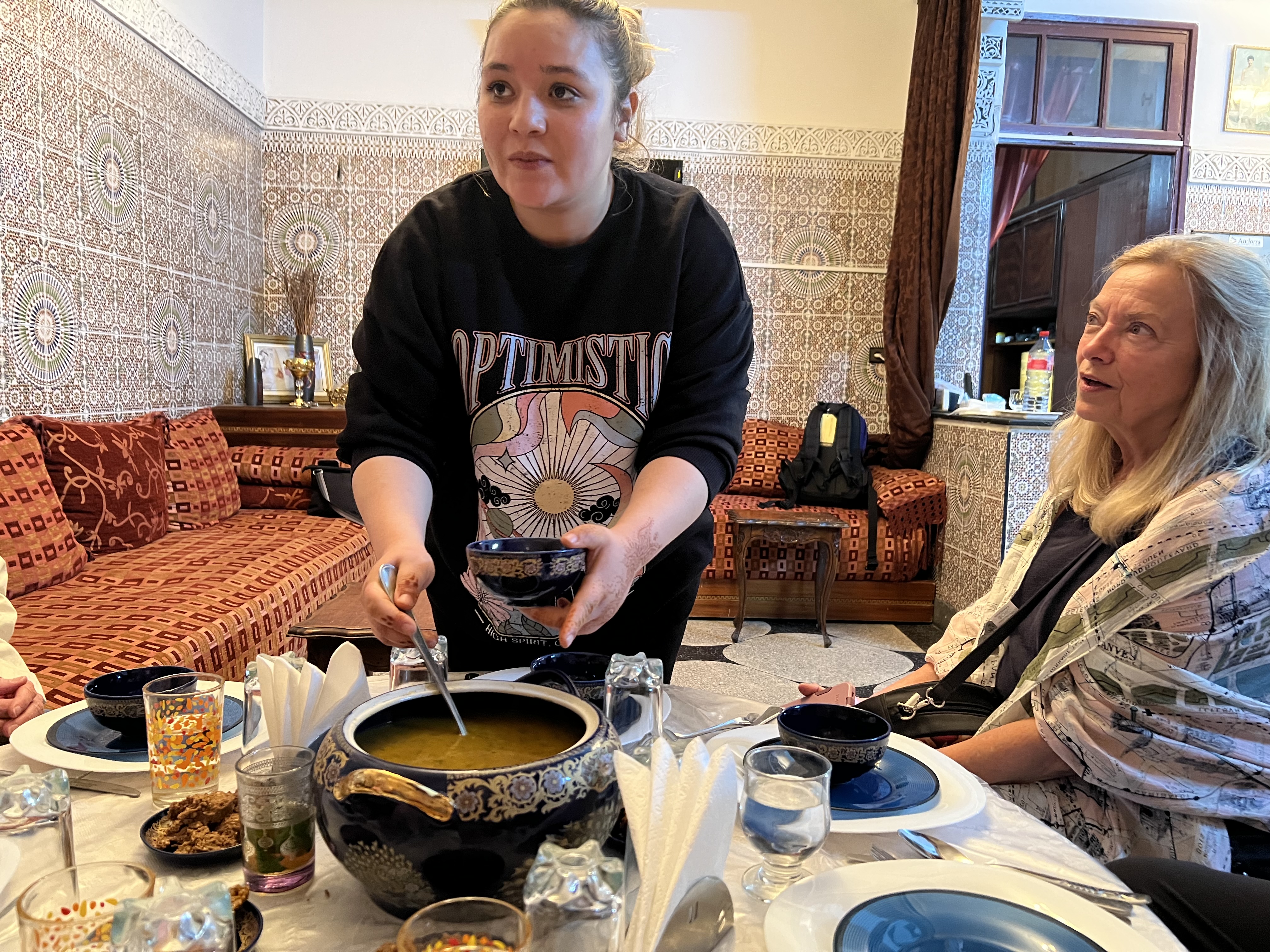
After dinner Rania asked us if we had ever tried on Moroccan dress and offered to bring out some of her caftans for us to try. We were like kids playing dress-up as Rania told us about the different caftans and we each chose one to try on.
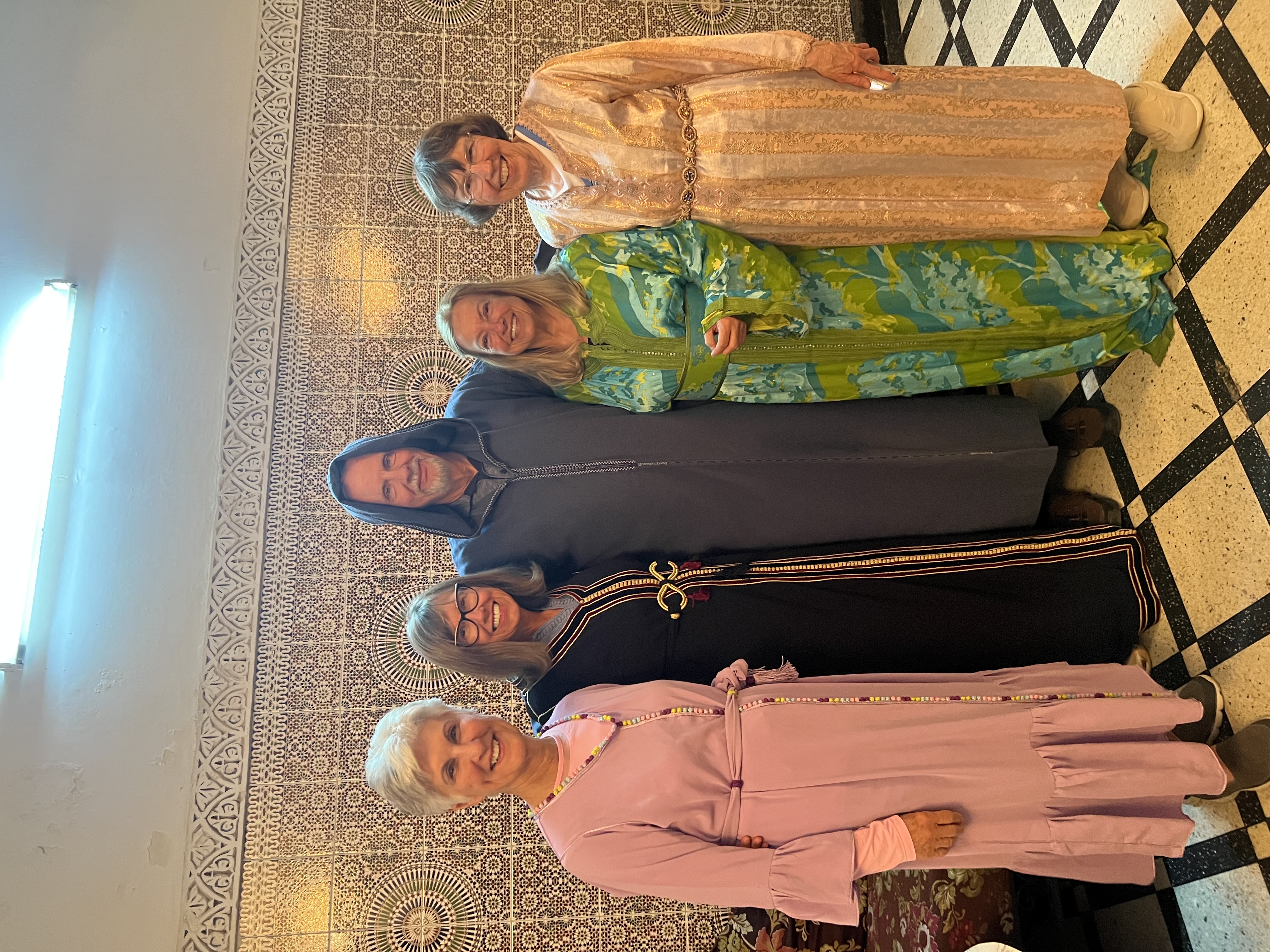
Rania even modeled her wedding dress for us.
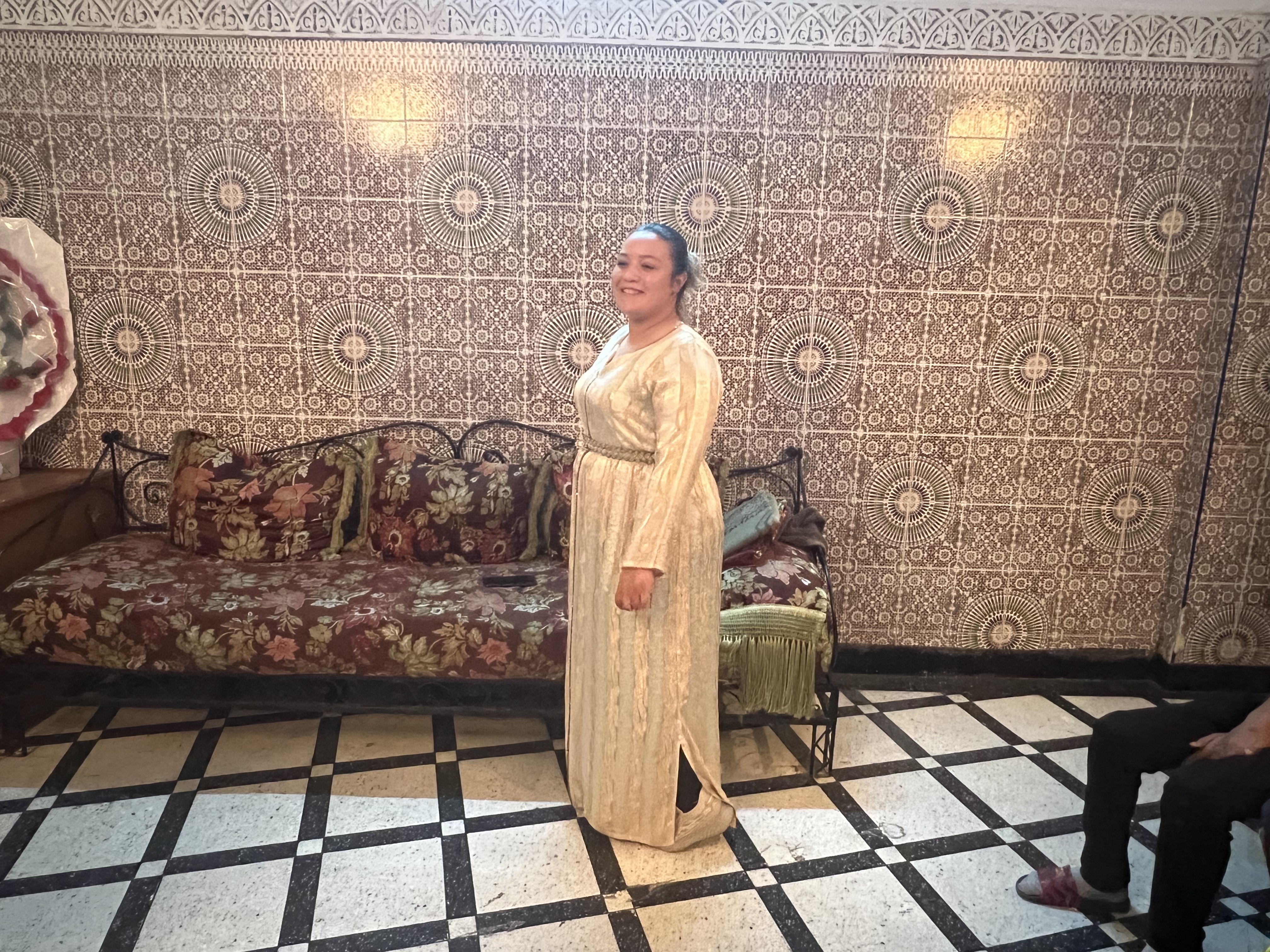
Before we left Rania wrote each of our names in Arabic-a special memento of our special evening.
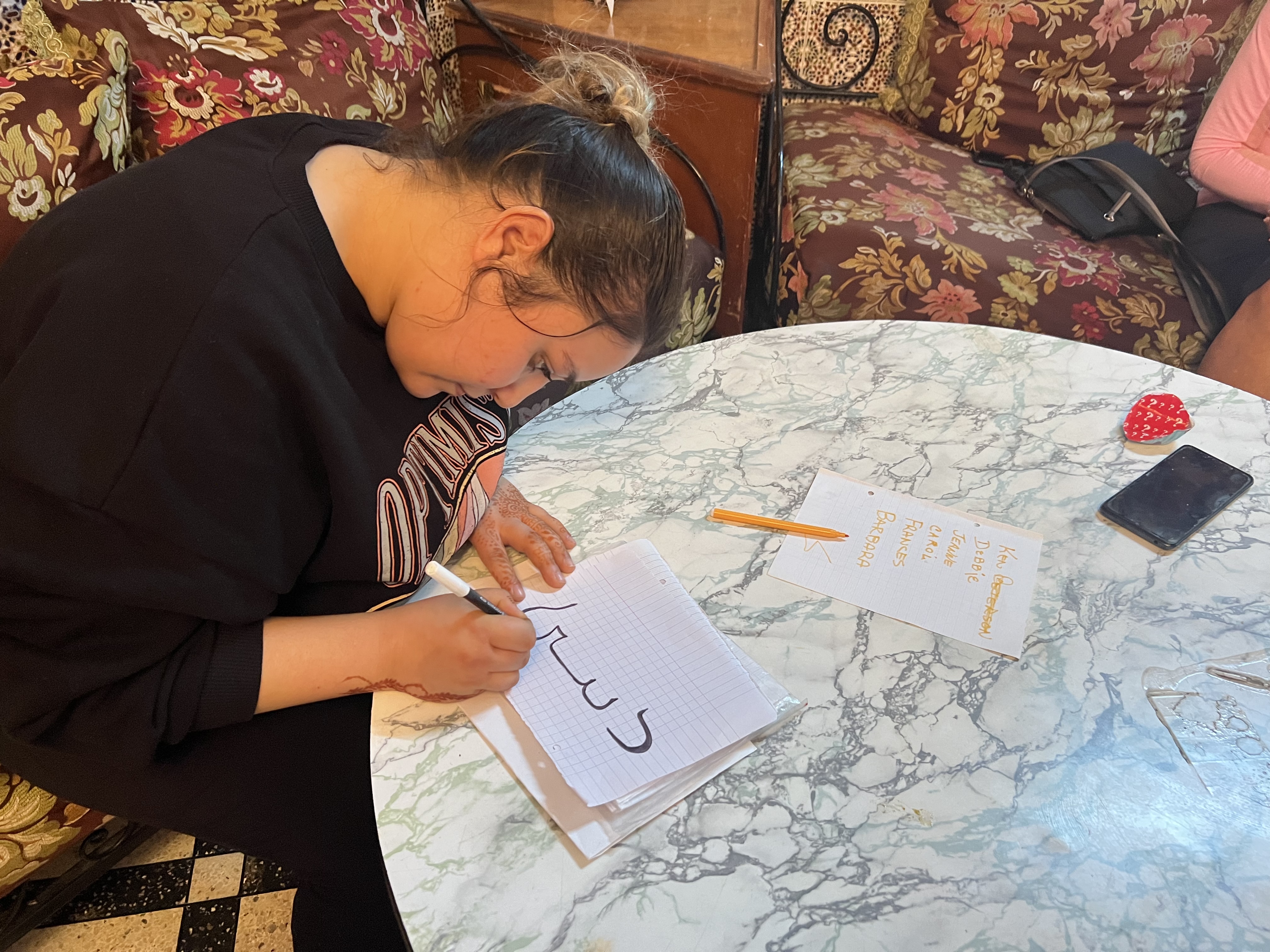
This was my first opportunity to spend time with a Muslim family in their home. I will always remember and treasure the special night with this young Moroccan family. It seems to me the world would be a more peaceful place if we could all have more experiences like this.
